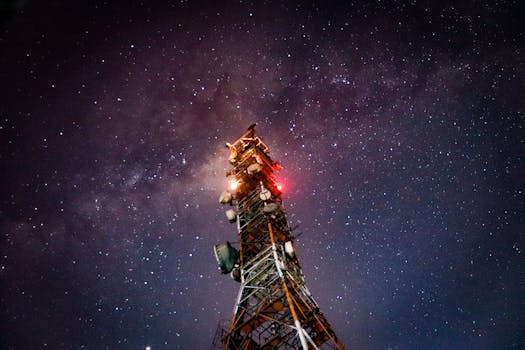MEO Satellites: Revolutionizing Global Communication with Medium Earth Orbit Technology – MEO Satellites

MEO Satellites: Revolutionizing Global Communication with Medium Earth Orbit Technology – MEO Satellites
MEO satellites, or Medium Earth Orbit satellites, are a type of satellite that operates in an orbit between 2,000 and 36,000 kilometers above the Earth’s surface. This orbit is higher than Low Earth Orbit (LEO) satellites but lower than Geostationary Orbit (GEO) satellites. MEO satellites are gaining popularity due to their unique advantages, which make them ideal for a wide range of applications, including navigation, communication, and Earth observation.
How MEO Satellites Work
MEO satellites work by transmitting and receiving signals to and from Earth-based stations. They are equipped with transponders, which are devices that receive signals, amplify them, and re-transmit them back to Earth. MEO satellites are typically used for applications that require a high degree of accuracy and reliability, such as navigation, communication, and weather forecasting.
One of the key advantages of MEO satellites is their ability to provide global coverage with a smaller number of satellites than LEO or GEO satellites. This is because MEO satellites have a larger footprint on the Earth’s surface, allowing them to cover a wider area with a single satellite. Additionally, MEO satellites have a lower latency than GEO satellites, making them more suitable for real-time applications such as voice and video communication.
Applications of MEO Satellites
MEO satellites have a wide range of applications, including navigation, communication, and Earth observation. Some of the most notable applications of MEO satellites include:
Navigation: MEO satellites are used in navigation systems such as GPS, GLONASS, and Galileo. These systems provide location information and timing signals to GPS receivers on the ground, allowing users to determine their precise location and time.
Communication: MEO satellites are used for communication applications such as satellite phone and internet services. They provide a reliable and secure way to communicate with people in remote or underserved areas where traditional communication infrastructure is not available.
Earth Observation: MEO satellites are used for Earth observation applications such as weather forecasting, climate monitoring, and natural disaster response. They provide high-resolution images of the Earth’s surface, allowing scientists to monitor changes in the environment and predict weather patterns.
Benefits of MEO Satellites
MEO satellites offer several benefits over traditional GEO satellites, including:
Lower latency: MEO satellites have a lower latency than GEO satellites, making them more suitable for real-time applications such as voice and video communication.
Global coverage: MEO satellites can provide global coverage with a smaller number of satellites than LEO or GEO satellites, making them more cost-effective and efficient.
Increased accuracy: MEO satellites are more accurate than LEO satellites, making them ideal for applications that require a high degree of precision, such as navigation and Earth observation.
Conclusion
In conclusion, MEO satellites are revolutionizing the way we communicate globally, offering faster and more reliable connections than traditional GEO satellites. With their unique advantages, including lower latency, global coverage, and increased accuracy, MEO satellites are ideal for a wide range of applications, including navigation, communication, and Earth observation. As the demand for satellite-based services continues to grow, MEO satellites are likely to play an increasingly important role in the future of global communication.




